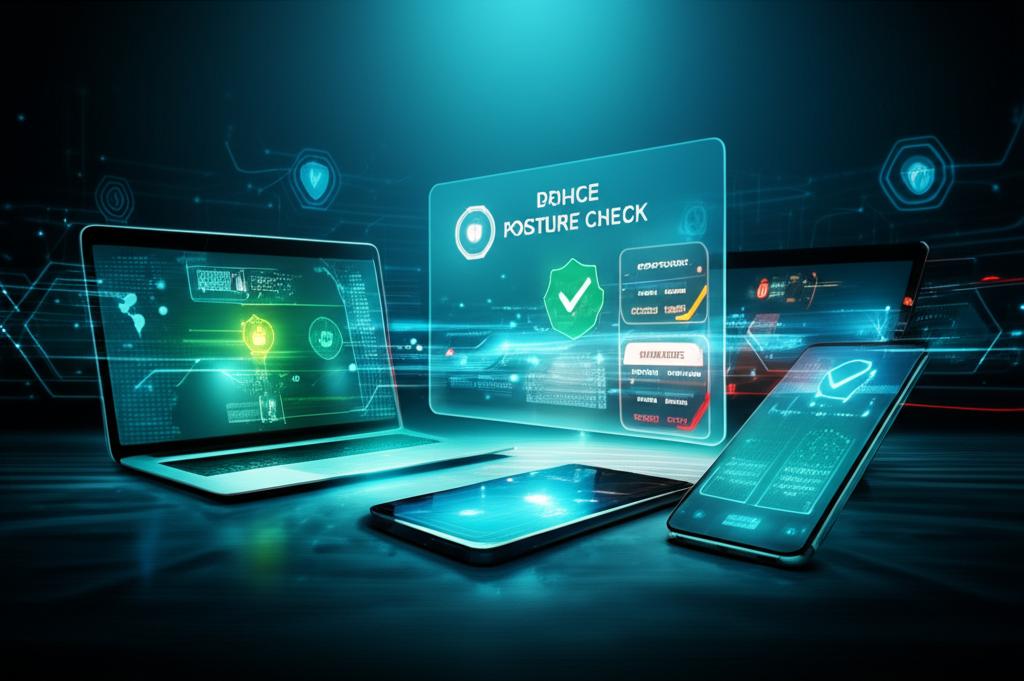Unlocking Secure Access: The Crucial Role of Device Posture Check (DPC)
What is a Device Posture Check (DPC)?
In today’s interconnected digital landscape, where devices connect from anywhere, ensuring the security of your network and data is paramount. This is where a Device Posture Check (DPC) comes into play. A Device Posture Check is a powerful security mechanism designed to evaluate the compliance and security status – or “posture” – of an endpoint device (such as a laptop, smartphone, or tablet) *before* it is granted access to a network, application, or sensitive data. Its fundamental purpose is to ensure that only devices meeting predefined security policies and health standards can connect, significantly reducing the organization’s attack surface.
Why is Device Posture Check Essential?
The rise of remote work, Bring Your Own Device (BYOD) policies, and cloud-based applications has blurred traditional network perimeters. Devices often connect from unsecured networks, and users might inadvertently introduce vulnerabilities. Without a robust Device Posture Check, a single compromised or non-compliant device could act as an entry point for malware, ransomware, or unauthorized data access. DPC acts as a gatekeeper, enforcing a proactive security stance by validating device health at the point of access, which is a cornerstone of modern cybersecurity strategies like Zero Trust.
Key Elements Evaluated During a Device Posture Check
A comprehensive Device Posture Check typically assesses several critical aspects of a device’s configuration and state. These checks are dynamic and can be tailored to an organization’s specific security policies and risk appetite:
- Operating System (OS) Version & Patches: Verifies that the OS is up-to-date with the latest security patches and not running an outdated, vulnerable version.
- Antivirus/Anti-malware Status: Confirms that antivirus software is installed, active, running, and its definitions are current.
- Firewall Status: Ensures the device’s host-based firewall is enabled and correctly configured.
- Disk Encryption: Checks if full disk encryption (e.g., BitLocker, FileVault) is active to protect data at rest.
- Compliance with Company Policies: Assesses adherence to specific organizational security standards, such as mandatory software installations or prohibited applications.
- Jailbreak/Root Status: Detects if mobile devices have been rooted or jailbroken, which can expose them to significant security risks.
- Endpoint Detection and Response (EDR) Agent: Verifies the presence and operational status of EDR agents for continuous monitoring.
The Undeniable Benefits of Implementing Device Posture Check
Implementing a strong Device Posture Check mechanism offers a multitude of advantages for organizations committed to robust security:
- Enhanced Security Posture: Prevents non-compliant or potentially compromised devices from accessing critical resources, significantly lowering overall security risk.
- Reduced Attack Surface: By allowing only healthy devices, it limits the entry points for cyber threats like malware, ransomware, and unauthorized access.
- Regulatory Compliance: Helps organizations meet stringent industry regulations (e.g., GDPR, HIPAA, PCI DSS) by demonstrating due diligence in endpoint security.
- Foundation for Zero Trust: DPC is a fundamental pillar of a Zero Trust architecture, where no device is trusted by default, and continuous verification is key.
- Improved Visibility and Control: Provides IT and security administrators with real-time insights into the security health of all connected endpoints.
- Support for BYOD & Remote Work: Safely enables flexible work models by ensuring personal and remote devices adhere to corporate security standards.
Integrating DPC into Your Security Strategy
Device Posture Check solutions are often integrated into broader security frameworks and technologies. These include Network Access Control (NAC) solutions, which enforce policies for devices attempting to connect to the network; Endpoint Detection and Response (EDR) platforms, which monitor device activity; and Identity and Access Management (IAM) systems, which verify user identities. By embedding DPC into these systems, organizations can create a layered, adaptive security defense that continuously validates device health and compliance.
Conclusion
In an era of evolving cyber threats and dynamic work environments, the Device Posture Check is no longer just a best practice; it’s a critical component of a resilient cybersecurity strategy. By proactively verifying the security health of every device before it gains access, organizations can significantly bolster their defenses, protect sensitive data, and maintain operational integrity. Embracing DPC is a crucial step towards achieving a secure and compliant digital ecosystem.







